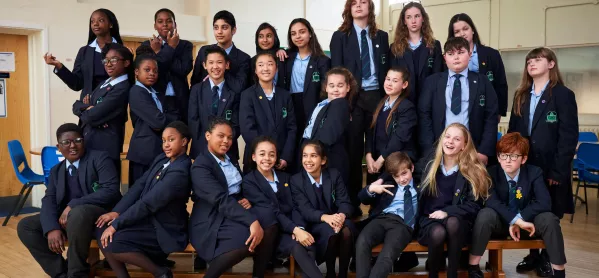Like most schools, we have been working to combat racism for many years and have an excellent record of racial harmony.
But stereotypical views and prejudice still exist, as they do everywhere. It’s imperative not to be complacent and keep working to eradicate prejudice and inequality.
In late 2018, we were approached by a TV production company about taking part in a documentary to see whether unconscious racial bias could be identified and changed, thus improving racial cohesion and inclusivity.
It was a difficult decision.
It looked like an excellent opportunity to work with world-renowned experts in anti-racism, but there was fear: was this about serious educational research into unconscious bias or something more sensationalist?
The producers gained our confidence and convinced us to participate.
So, in March, 2019 a racially diverse group of 24 Year 7 students and their teachers embarked on a three-week experiment that became The School That Tried to End Racism.
Frontline insights
Supported by a team of experts on race and social psychology, teachers facilitated a variety of activities to engage students in critical thinking on the subject of race.
Through classroom discussions, they explored race, stereotypes, unconscious bias and discrimination, often breaking up into smaller race-specific affinity groups to explore racial identity.
It was an intellectually and emotionally challenging experience that required the resilience of students, teachers, experts and the production team.
However, it quickly became clear that pupils were becoming more adept at navigating difficult conversations on race, including being respectful and listening to one another, especially when the affinity groups came together to feed back their conversations on racial identity.
Eye-opening activities
One of the most interesting was the line-up, where students had to guess the jobs of visitors to identify any stereotypical expectations of different professions. (It was the female firefighter that caught many of them out.)
Another task saw the pupils dressed in their PE kits and line up on the track for the “privilege race” that would reveal the impact of race-related privilege and disadvantage.
Pupils stepped forwards or backwards if a statement applied to them, showing that we are all born with certain privileges and disadvantages that influence the course of our lives.
Emotions ran high and the pupils brought these emotions back to the classroom. But, crucially, the dialogue was not restricted to the classroom.
Into the world
Pupils visited the local high street to interrogate black, Asian and minority-ethnic (BAME) representation in art and contemporary culture, such as magazines and adverts.
There were visits to London: an uncomfortable tour of the National Portrait Gallery; a look at the statues in central London and a historical tour of the City of London to see just how much BAME groups have contributed to the history and development of the UK.
Lessons to be learned
Watching the documentary for the first time brought mixed emotions.
There was pride for our involvement in such an important project and enjoyment of the eureka moments. But there was also discomfort when pupils were distressed recalling bad memories, or experiences of prejudice or felt inferior because of their race.
And there is plenty that other schools can learn from our experiences.
We learned that teaching race and racism is much more complex than simply introducing a few interesting curriculum activities.
It is difficult to talk about race, as such discourse must address notions of self and otherness, ethnicity, the burden of history, and the lived experiences of minority and majority racial groups.
But it is imperative to find the language and sensitivity to engage in deeper conversations about race within our school communities and to teach pupils of all ethnic backgrounds to understand stereotypes, prejudice and inequality.
We must equip ourselves to create even safer spaces to facilitate dialogue on racial identity, unconscious bias and discrimination, and we must be prepared to support students and each other through the potential challenges that this may bring.
Hopefully the documentary can serve as an insight for the education sector about what can be achieved if schools are given the opportunity to properly address this topic, and teachers are adequately supported to teach it.
Steve Hume is headteacher of Glenthorne High School in Sutton and Dr Sotonye Odugbemi and Duncan Gillies are teachers. The School That Tried to End Racism will broadcast on Channel 4 on Thursday at 9pm

